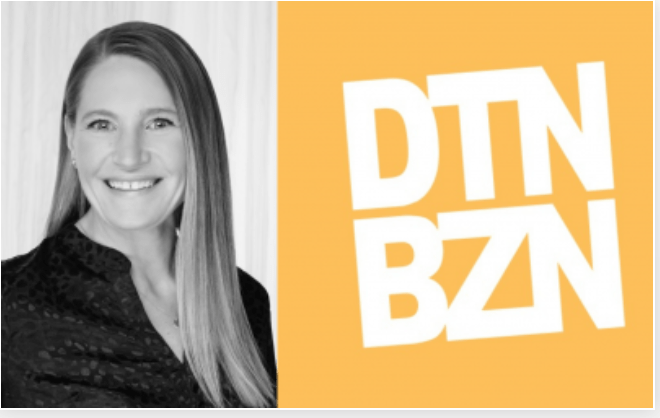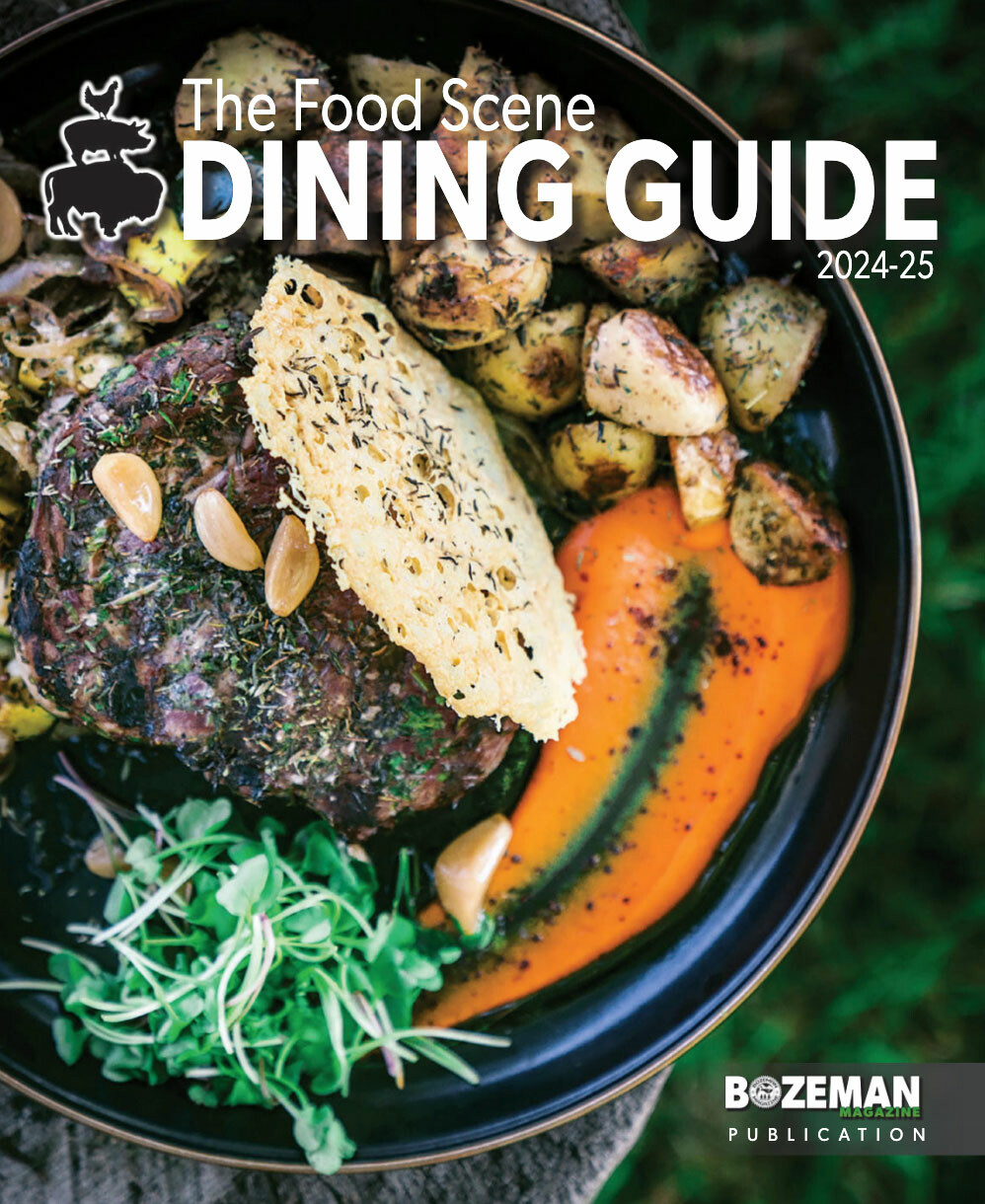
The Downtown Bozeman Association and over 25 participating downtown restaurants, pubs and cafes are excited to bring you Downtown Bozeman Restaurant Week April 19-25. This 7-day event will be filled with good eats and drinks, off-menu specials, exclusive dining experiences and chances to win some amazing prizes from our sponsors.
Start planning your date night, birthday dinner, employee appreciation brunch, or whatever excuse you need to dine in Downtown Bozeman because our amazing businesses are ready to serve you.
A list of participating establishments for the 2021 Downtown Bozeman Restaurant Week can be found below. You can find this list, as well as all the specials and fun to be found, will ALL be available online at www.downtownbozeman.org/restaurantweek2021 and by using the Restaurant Week QR code soon to be sprinkled around downtown. This will help you plan your attack for the week! Please note, event hours and specials will vary depending on the business.
Snag a Downtown Bozeman Restaurant Week Punch Card from any participating business. Fill out your contact information and take this card with you to FIVE different participating restaurants, order from their special Restaurant Week Menu and ask your server to PUNCH your card. Once you've collected five different punches, leave it at the location of your last punch or drop it in the drop box at 222 E Main, Suite 302! These will be collected the week after Restaurant Week and put into a drawing for some amazing prizes from our sponsors.
Whether you're a breakfast fanatic or someone who never skips dessert, we're sure you'll find something to tickle your taste buds at Downtown Bozeman Restaurant Week.
Participating Restaurants:
Bacchus Pub
Backcountry Burger Bar
Blend
Bozeman Spirits Distillery
Copper Whiskey Bar
El Camino Bar
Fabers Bakery and Deli
Fielding's
Fresco Cafe, Inc.
Genuine Ice Cream
little star diner
Lockhorn Cider House
Mackenzie River Pizza
Montana Ale Works
Nina's Tacos & Tequila
Open Range Restaurant
Plonk
Sidewall Pizza Company
Smoke, Fire and Coal
Squire House
Steep Mountain Tea House
Sweet Chili Asian Bistro
Ted's MT Grill
The Nova Cafe
Tune Up
Urban Kitchen
Wildrye Distilling
ATTENTION Bozeman and Beyond: PLEASE plan to enjoy Downtown Bozeman Restaurant throughout the week and NOT just one night! If you intend to enjoy Restaurant Week in-person by dining in anytime between April 19-25, remember to follow all safety guidelines in place by the Health Department and each individual business.
Downtown Bozeman Restaurant Week will go on rain or shine and is FREE to the public! Visit www.downtownbozeman.org or call 406-586-4008 for more information! Life is Downtown…

Montana’s spring male turkey season opens April 10. Turkey hunters can purchase a turkey license for a general area at FWP offices, license providers or online. The application deadline for western Montana’s spring gobbler season permits has passed.
The 2021 spring turkey season regulations, with details on turkey hunting in the general area, are available at FWP offices, license providers and online at fwp.mt.gov.
Hunters should remember that when transporting a spring turkey in the state on Montana, one leg and foot must be naturally attached for evidence of sex. Montana law requires landowner permission for hunting on all private land.
FWP also reminds spring turkey hunters that all Upland Game Bird Enhancement Program enrollments are currently closed and only open during the fall hunting season. Similarly, most Block Management Areas are also closed, but some remain open for spring turkey and spring bear opportunities. No shed hunting, hiking or other recreations are allowed on these properties without landowner permission. Be sure to check the FWP website for dates and locations these properties open.

The spring black bear hunting season starts April 15.
Hunters need to be aware that black bears must be presented for in-person inspection and tagging within 10 days of harvest. The hide and skull must be presented in a condition that allows full inspection and tooth collection (i.e. unfrozen). For local tagging information, contact the Montana Fish, Wildlife & Parks office nearest to you.
Three Black Bear Management Units have quotas and mandatory 48-hour reporting: Units 510, 520, and 700. When the quota is reached or approached in each of these districts, the black bear season in that district will close.
It's important to know the difference between grizzly bears and black bears. Black bear hunters in Montana are required to pass the Bear Identification test to obtain a black bear license. Montana's Bear Identification Program is intended to prevent the killing of grizzly bears as a result of mistaken identity by hunters.
For more information on black bear hunting, visit https://fwp.mt.gov/hunt/regulations/black-bear.

Sweet Pea Festival is celebrating its 44th Festival! The past 44 years have brought about many great changes to our organization and its annual events. Growing from the initial idea in 1977 of a community's desire to celebrate the arts, Sweet Pea has taken great strides to bring a unique arts festival to the Bozeman community. This year, our juried art show will once again be hosted by our longtime sponsor ERA Landmark, at their Main Street Location. This exhibit will highlight great artists from our state. There will be cash awards to First ($500), Second ($250), and Third ($125) place winners. Click to apply.
DEADLINE TO APPLY: JUNE 4
Show Dates: July 9 - August 8
ERA Landmark
9 E. Main St.
Opening Reception July 9 ArtWalk
 image from pexels
image from pexels
There are always risks when you take to the roads, and with six million auto accidents occurring in the US every single year, it's clear to see that those risks are very real. They can become even worse after dark, as the odds of encountering a reckless or under-the-influence driver are even higher, and visibility can be more difficult too.
Still, a lot of people find themselves driving after dark. Many people like to go out in the evenings to clubs and bars, for example, while others work late shifts and need to get to and from their jobs in nighttime conditions, and there are many other situations where you might find yourself driving at night as well. This guide will cover some top tips to help you stay safe.
Be Extra Vigilant
Vigilance is one of the most important skills for any driver to master. You have to be alert, attentive and focused on your surroundings as you drive in order to spot possible threats or hazards and then take the appropriate action to avoid them, and this can truly be the “make or break” factor when it comes to staying safe or getting into an accident, especially at night.
You have to be particularly vigilant in the evenings, as the conditions can make accidents much more likely to occur. People tend to be more likely to speed or break the rules after dark, as they may feel that they're less likely to be spotted or caught, and there's also a higher chance of encountering drunk drivers too.
Make Use of Your Lights and Mirrors
Obviously, one of the big problems with driving after dark is the fact that visibility levels can be reduced. Many places have streetlights and other sources of light to illuminate the roads, but it can still be much harder to see the road ahead of you and the area around you, which means that hazards and dangers can simply spring out of nowhere, totally unexpected and raising the risk of terrible auto accidents occurring.
Use your car's own headlights to lighten up the path ahead of you, watching closely for road signs, hazards, and, if you're in the city, looking over to the sidewalks too to check for any pedestrians who might be about to step out into the road. It's also recommended to make consistent use of your mirrors to watch the sides and rear of your vehicle for any other cars nearby.
Watch Out for Drunk Drivers
As stated earlier, the odds of encountering drunk drivers after dark is higher than in the daytime. This is logical, as many people tend to drink in the evenings, after work, and this is when bars start to open up and fill up with people. Even though we're all aware of the risks of drunk driving, countless Americans admit to getting behind the wheel after a drink or several.
If you cross these drivers on the road, their slow reaction and poor decision-making could put you in danger, so try to watch out for them. There are many red flags and warning signs you can rely on to alert you to a drunk driver. These drivers will often swerve left and right, change speed randomly, react slowly to traffic light changes, and fail to use mirrors and signals too.
Never Drive Under the Influence
We've just spoken about the dangers of drunk driving, and it's important to always remember the risks you can face if you choose to get behind the wheel after drinking. Alcohol impairs so many of the key skills you need to drive safely, from your ability to spot and recognize hazards to your hand-eye coordination, which is necessary for controlling the steering wheel and keeping yourself safe.
It's simply not worth the risk to drink and drive, and the statistics prove this point, showing that thousands of people die every single year in drunk driving-related accidents. So don't let yourself make that same mistake. If you're planning to go to the bar with friends or family, have a designated driver or make use of other transportation options like taxis and rideshare services to help you get home safely when the night is over.
Final Word
Driving after dark can feel quite daunting, especially in big city environments where drunk drivers and reckless drivers are common. Keep these tips in mind the next time you're navigating the roads at night time in order to keep yourself, and those around you safe.






 image from pexels
image from pexels


News Comments
Thank you
Open Auditions for Annie
Monday, Sep. 16, 2024
I’m at the Bozeman airport where your painting, “Blowing East” is displayed. It’s absolutely gorgeous! Bravo, Marci!!
The Artists’ Gallery in Bozeman’s Emerson Cultural Center May Exhibits
Sunday, Jun. 30, 2024
This is so typical of a sign in, which we should not have to do to check if we or some one in our party got a permit. I have been working or "creating an account" for 30 minutes and just get the same ...
Smith River permit drawing results available
Sunday, Mar. 10, 2024
I have struggled with this podcast and my own participation therein, the event itself obviously traumatic, but beyond that my inability to reach anyone and convey anything resembling truth. The person ...
Billings, MT Case Becomes True Crime Podcast | 'An Absurd Result'
Marktokarski
Saturday, Jan. 20, 2024